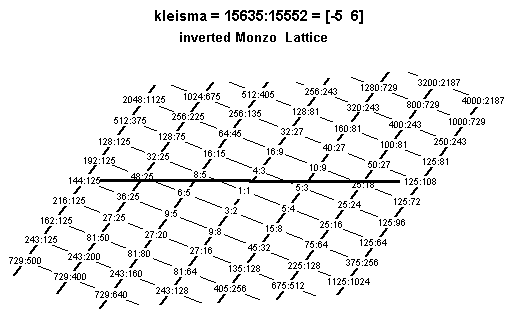The kleisma is a small interval composed of 6 major thirds up and 5 fifths down [= 3-556].

Its ratio is 15635/15552 [= 0.08 Semitones = ~8.10728 cents].
The term was introduced by Shohé Tanaka.
[from John Chalmers, Divisions of the Tetrachord]
Another interval that has become known as a kleisma (and in fact is now the one most commonly referred as such) is the one which forms the difference between the 5-limit "augmented 6th", with the ratio 225:128 [= 2-73252 = 9.77 Semitones = ~976.5374295 cents], and the harmonic "7th", with the ratio 7:4 [= 2-271 = 9.69 Semitones = ~968.8259065 cents]. This kleisma's ratio is thus 225:224 = 0.08 Semitones = ~7.711522991 cents.
[from Joe Monzo, JustMusic: A New Harmony]
REFERENCE:
Tanaka, Shohé. "Studien im Gebiete der reinen Stimmung",
Vierteljahrsschrift für Musikwissenschaft
vol. 6 no. 1, Friedrich Chrysander, Philipp Spitta, Guido Adler (eds.),
Breitkopf und Härtel, Leipzig, 1890, pp. 1-90.
English translation of pages 8 to 18 by Daniel J. Wolf,
"Studies in the Realm of Just Intonation",
Xenharmonikôn
vol. 16, autumn 1995, pp. 118-125;
reproduced on the web at
The Wilson Archives
(requires free
Adobe Reader).
see also
anomaly,
unison vector,
xenharmonic bridge,
diesis,
comma,
skhisma,
5-limit intervals,
100 cents and under